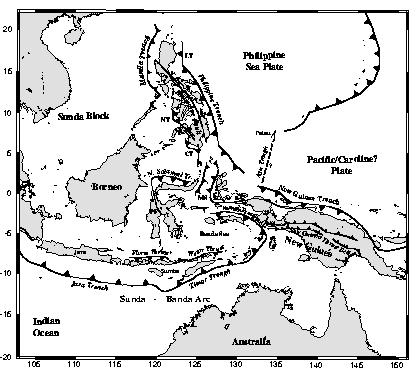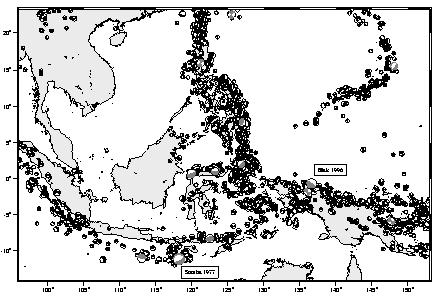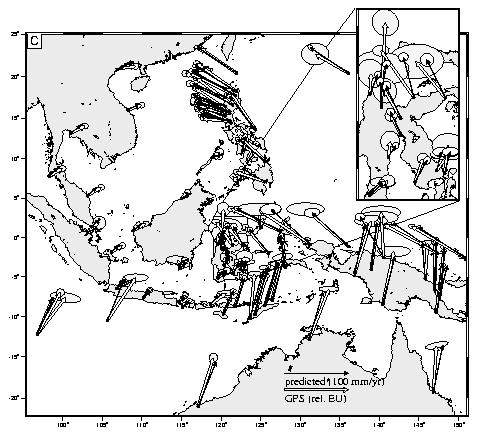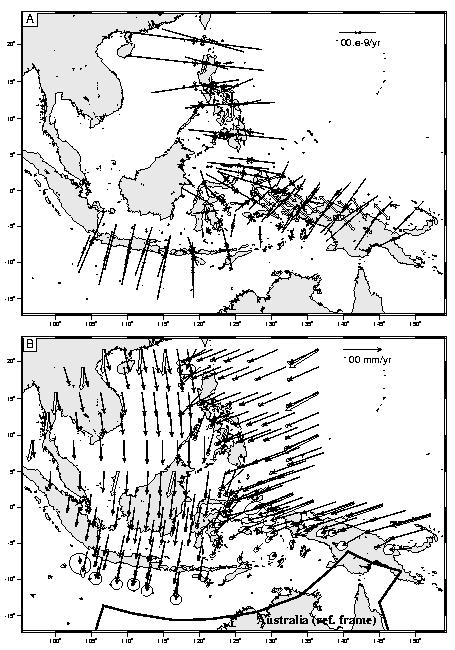 Figure 1. Tectonic Map. PF = Palu Fault, TAF = Tarera-Aiduna Fault
Figure 1. Tectonic Map. PF = Palu Fault, TAF = Tarera-Aiduna FaultSF = Sorong Fault, LT = East Luzon Trench, NT = Negros Trench, CF = Cotabato Fault, CT = Cotabato Trench, BH = Bird's Head, and MS = Molucca Sea
Corné Kreemer and William E. Holt (SUNY Stony Brook), Saskia Goes and Rob Govers (Utrecht Univ.)
 Figure 1. Tectonic Map. PF = Palu Fault, TAF = Tarera-Aiduna Fault
Figure 1. Tectonic Map. PF = Palu Fault, TAF = Tarera-Aiduna FaultWe use 93 previously published GPS velocities to determine a self-consistent strain rate and associated velocity field. In this procedure we fit GPS velocities while minimizing the magnitude of the model strain rate field. We constrain the style and direction of the model strain rate field from a seismic strain rate field inferred from earthuakes with Mw less than 1e20 N m. Fig2. shows the total seismic catalog since 1977, which we used except for the largest 11 events. Fig3. Shows the GPS velocities plus the modelled velocities at the GPS sites. Fig 4. shows the total self-consistent strain rate and velocity field.
 Figure 2. Focal mechanisms for events between 1/77-5/98.
Figure 2. Focal mechanisms for events between 1/77-5/98.
 Figure 3.
Velocities relative to stable Eurasia. White arrows are GPS velocities,
Figure 3.
Velocities relative to stable Eurasia. White arrows are GPS velocities,
 Figure 4. a) Pricipal axes of modelled strain rate field,
Figure 4. a) Pricipal axes of modelled strain rate field,
Our modeled strain rate field for present-day deformation reveals the following;
a) High predicted strain rates for Java Trench, but low (historic) seismic strain rates,
b) The eastern Banda arc and the southern Banda Sea effectively belong to the AU plate,
c) For the eastern Banda arc region AU-SEA convergence is distributed over the northen Banda Sea
and the Sulawesi/Sulawesi Trench region,
d) Large strike slip strain in Irian Jaya, but some trench-normal convergence at the New Guinea Trench,
indicating strain partitioning,
e) High convergence strains in the Molucca Sea regio,
f) Strain partioning in the Philippines, however most PH-SEA convergence seems to be taken up along
the Manila Trench (and on the mainland of the southern archipelago) instead of along the Philippine Trench, which is opposite from what you would expect
considering the seismic moment release.
![]() Click here for Paper abstract
Click here for Paper abstract